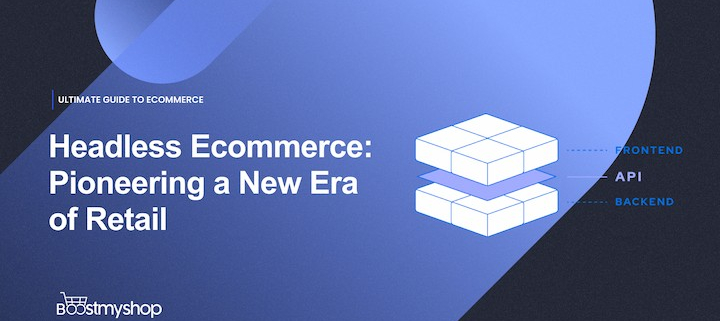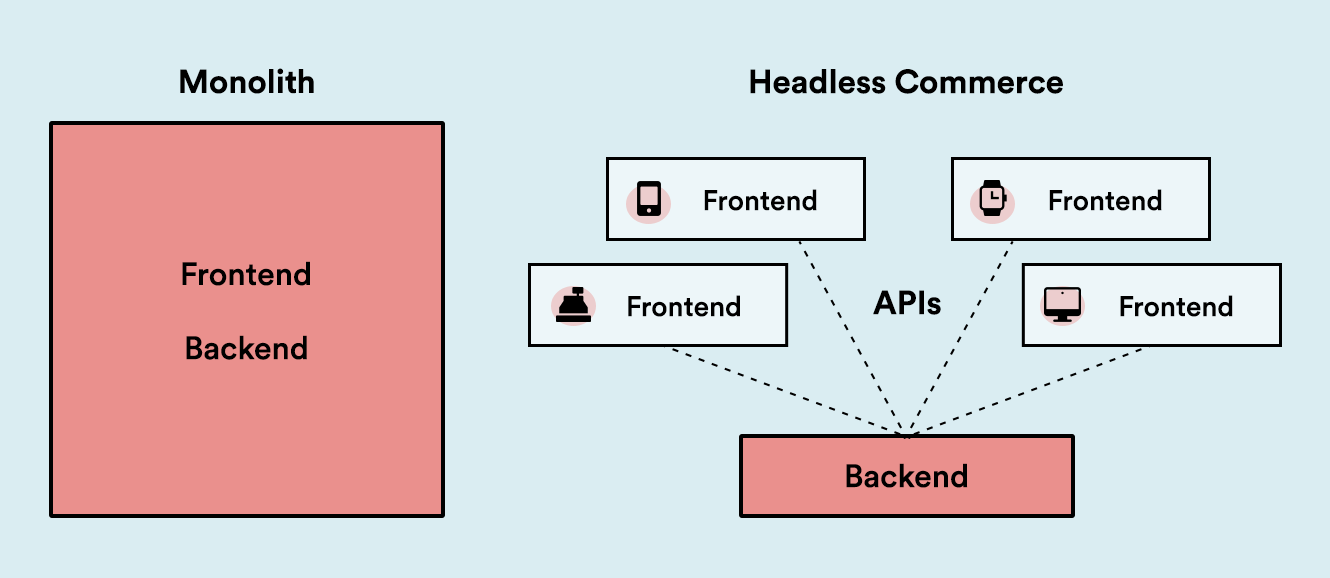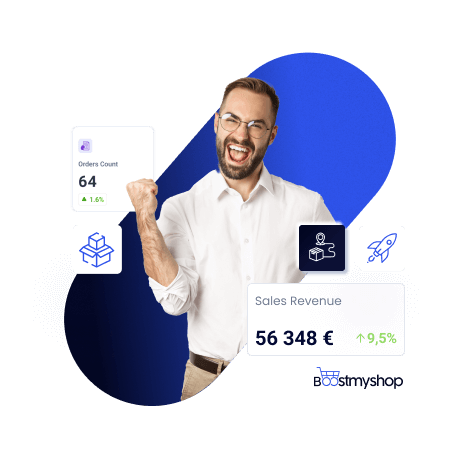Headless Ecommerce: Pioneering a New Era of Retail
In the rapidly evolving landscape of digital commerce, where trends come and go like seasons, one innovation has emerged as a true game-changer: Headless Ecommerce. As businesses strive to keep up with ever-changing customer expectations and technological advancements, this concept has garnered attention as a revolutionary approach that’s reshaping the retail industry. In this article, we’ll delve into the intricacies of Headless Ecommerce, exploring its core concepts, benefits, technical implementation, and its potential to shape the future of retail.
Setting the Stage: The Evolution of Ecommerce
The journey of retail, from brick-and-mortar establishments to the digital realm, has been nothing short of extraordinary. Over the years, we’ve witnessed the shift from traditional shopping to the convenience of online purchases. Ecommerce has redefined the way businesses connect with consumers, offering a platform where transactions transcend geographical boundaries.
Embracing Innovation: What is Headless Ecommerce?
In the quest for enhancing user experiences and streamlining operations, the concept of Headless Ecommerce has emerged as a beacon of innovation. At its core, Headless Ecommerce decouples the frontend and backend of an online store, enabling retailers to manage independently and optimize each component. This separation allows for more flexibility and customization in designing user interfaces, leading to a seamless and personalized shopping journey.
The Promise of Transformation: Why Headless Ecommerce Matters
The allure of Headless Ecommerce lies in its promise to revolutionize the way businesses interact with customers. By breaking down the traditional architecture, retailers gain the power to create dynamic, immersive, and consistent experiences across various devices and channels. This shift in approach not only addresses present challenges but also positions businesses to stay ahead in an ever-evolving digital world.
The Core Concepts of Headless Ecommerce
Breaking Down Headless Architecture
At the heart of Headless Ecommerce lies the concept of decoupling the frontend and backend systems. This approach liberates retailers from the limitations of monolithic architectures, enabling them to update and optimize each aspect independently.
Frontend and Backend Decoupling
Frontend and backend decoupling allow businesses to choose the most suitable technology for each component. This empowers retailers to adapt swiftly to new technologies and trends, staying aligned with customer preferences.
API Communication: Building Seamless Connections
APIs (Application Programming Interfaces) play a pivotal role in Headless Ecommerce. They establish seamless communication between frontend and backend systems, enabling real-time updates, personalized content delivery, and a superior shopping experience.
Scalability and Flexibility: Empowering Retailers
The flexibility afforded by Headless Ecommerce goes beyond aesthetics. It enables businesses to scale resources according to demand, ensuring optimal performance during peak periods and offering a consistent experience to users.
Handling Traffic Surges with Ease
During sales events and promotional campaigns, website traffic can surge unexpectedly. Headless Ecommerce’s ability to scale resources ensures that online stores remain responsive and operational, preventing potential revenue loss.
Adapting to Changing Consumer Behaviors
Consumer behaviors and preferences are constantly evolving. Headless Ecommerce equips retailers with the agility to adapt to these changes swiftly, whether it’s introducing new features or enhancing the user interface.
The Benefits of Headless Ecommerce
Elevating User Experience to New Heights
Headless Ecommerce’s impact on user experience is profound. By optimizing the frontend for various devices, businesses can ensure fast loading times, reducing bounce rates and increasing conversions.
Fast Loading Times: The Impact on Conversion Rates
In the world of online retail, seconds matter. Slow loading times can lead to frustration and abandoned carts. Headless Ecommerce’s optimized frontend ensures swift interactions, creating a seamless shopping journey that encourages customers to complete their purchases.
Personalization and Tailored Content Delivery
Every customer is unique, and their shopping experiences should reflect that. Headless Ecommerce allows retailers to deliver personalized content, recommendations, and promotions based on user behaviors and preferences.
Cross-Channel Consistency: Creating Unified Brand Experiences
Consumers engage with brands across various touchpoints, from websites to mobile apps. Headless Ecommerce ensures a consistent brand experience, irrespective of the channel, fostering brand loyalty and recognition.
Mobile, Web, and Beyond: A Cohesive Journey
With the proliferation of mobile devices, responsive design has become paramount. Headless Ecommerce enables businesses to create tailored experiences for different devices, catering to the needs of modern shoppers.
Enhanced Analytics and Customer Insights
Detailed analytics drive informed decision-making. Headless Ecommerce’s ability to track user interactions across channels provides retailers with insights to refine marketing strategies and enhance customer engagement.
The Technical Side of Implementation
The Technology Stack
The foundation of successful Headless Ecommerce lies in choosing the right technology stack. Selecting a suitable Content Management System (CMS) – supporting solutions for Order Fulfillment, Carrier Management, CRM, POS etc and integrating APIs are key components of this stack.
Choosing the Right CMS: A Crucial Decision
The CMS chosen dictates the flexibility and scalability of the platform. Opting for a CMS that aligns with your business needs ensures a solid foundation for future growth.
API Integration and Third-Party Services
APIs form the bridge between frontend and backend systems. Integrating APIs effectively allows for seamless data exchange, enabling features like real-time inventory updates and personalized recommendations.
An Example with Boostmyshop solution:
Boostmyshop myPricing, as a dynamic pricing software, can utilize APIs to gather data from various sources, such as competitor pricing, market trends, and internal inventory information. It can then provide real-time pricing recommendations and updates to the frontend, ensuring accurate and dynamic pricing for customers.
Boostmyshop myFulfillment, on the other hand, can integrate with the backend systems to automate and optimize logistics processes. Through APIs, it can receive order information, update inventory levels, and communicate with shipping carriers. This allows for efficient order fulfillment, tracking, and seamless synchronization between the frontend and backend systems.
By integrating myPricing and myFulfillment into a headless ecommerce environment, businesses can leverage their functionalities while maintaining the flexibility and scalability provided by the headless architecture. The decoupled nature of the headless approach allows for easy integration of these solutions, enabling businesses to enhance pricing strategies, streamline logistics operations, and deliver a seamless customer experience across channels.
Challenges and Solutions in Development
Implementing Headless Ecommerce comes with its share of challenges. However, these can be overcome with careful planning, skilled development teams, and strategic approaches.
Navigating the Transition to Headless Ecommerce
Strategic Planning for Implementation
Before diving headfirst into Headless Ecommerce, meticulous planning is essential. Assessing your business needs and goals sets the stage for a successful transition.
Assessing Your Business Needs and Goals
Understanding your business’s unique requirements and long-term objectives helps tailor the Headless Ecommerce implementation to best serve your interests.
Identifying the Right Time for Transition
Timing is everything. Evaluating market trends and customer demands enables you to pinpoint the opportune moment to embrace the Headless Ecommerce approach.
Mitigating Risks and Ensuring a Smooth Transition
Embarking on any significant change entails risks. However, with careful planning and a well-executed strategy, these risks can be minimized.
Data Migration Strategies: Lessons from the Field
Migrating data seamlessly from legacy systems to Headless Ecommerce platforms requires a comprehensive data migration strategy. Real-world examples highlight best practices and potential pitfalls.
Training and Support for Staff and Customers
Transitioning to Headless Ecommerce impacts not only your technical infrastructure but also your staff and customers. Adequate training and support ensure a seamless experience for all stakeholders.
Conclusion
As technology continues to shape the future, Headless Ecommerce stands as a testament to innovation’s power. Its ability to adapt, scale, and enhance user experiences positions it as a long-term solution that’s here to stay.
The path to adopting Headless Ecommerce may seem complex, but with strategic planning, a solid technology stack, and a skilled development team, businesses can confidently make the transition.
In a world where innovation drives success, Headless Ecommerce offers a blueprint for retailers looking to navigate the evolving digital landscape. With its promise of transformation, seamless user experiences, and potential for cross-industry impact, Headless Ecommerce is more than a trend—it’s a pioneering force that’s revolutionizing retail as we know it.




